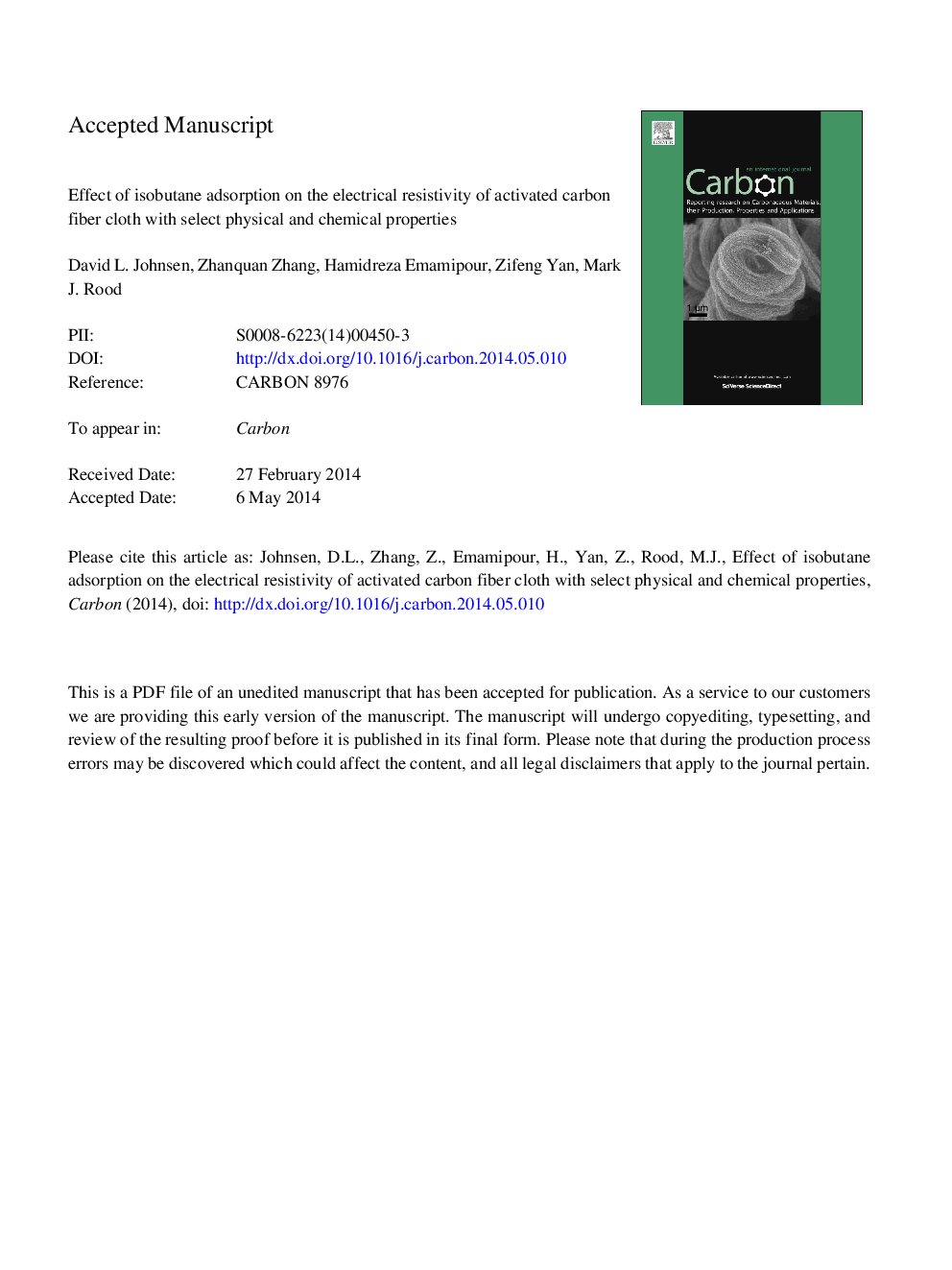| Article ID | Journal | Published Year | Pages | File Type |
|---|---|---|---|---|
| 7853776 | Carbon | 2014 | 32 Pages |
Abstract
It is important to develop new materials to improve our ability to purify gas streams. This study characterizes activated carbon fiber cloth's (ACFC's) electrical resistivity and the change in resistivity from isobutane adsorption. Results are presented for ACFC samples with select ranges of micropore volumes (0.35-0.92Â cm3/g) and surface oxygen contents (2.2-7.7Â at.%). The resistivity of all samples decreased with increasing temperature, which is attributed to the additional energy for electron hopping between nanographite domains. Increasing micropore volume resulted in a larger decrease in resistivity after an isobutane adsorption cycle, which is attributed to increased adsorption capacity with increasing micropore volume. However, increasing surface oxygen increased the change in resistivity/unit mass of isobutane adsorbed. Increasing oxygen for lower oxygen content samples increased the percent change in resistivity due to isobutane adsorption, while increasing oxygen for moderate oxygenated samples had no effect on this value. Thus, increasing surface oxygen improves ACFC's ability to sense adsorbed mass based on resistivity up to a threshold oxygen value. These results provide valuable insight into the factors affecting ACFC resistivity due to adsorption, which can be used to detect the amount of adsorbed mass and to determine the remaining adsorption capacity of the adsorbent.
Related Topics
Physical Sciences and Engineering
Energy
Energy (General)
Authors
David L. Johnsen, Zhanquan Zhang, Hamidreza Emamipour, Zifeng Yan, Mark J. Rood,
